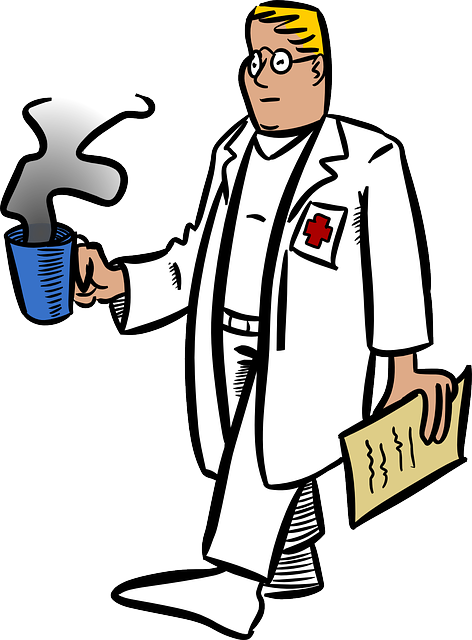First Aid for the Homestead- Part 4 (Hemostatic Agents)
In previous posts on first aid for the homesteader, prepper, etc., we have covered not only some basic items to have in your medical supplies, but how to use them. This post goes a little more in depth with a more advanced product to have and how to use it.

Image from Google, Licensed for Reuse
A Little Bit of History
Saving myself hours of medical research and you a lot of boring reading, here's the jist of where this product came from...
A hemostatic agent is one that speeds the clotting of blood. You can find Merriam-Webster's definition here.
Different materials have been used over the years, to include the shells of marine arthropods as well as potato starches. More reading on that subject and the use of these agents in Emergency Medical Services here. The problem with the early forms of these agents has been either the overall success with stopping blood, or the side affect of the product creating heat and damaging skin (initially used as a powder which was poured onto the bleeding wound). So, fast-forward through a few years of development along with testing by both military and civilian medical professionals and we have a rolled (or folded) gauze that is impregnated with a hemostatic agent.
Quik Clot Rolled Gauze/Combat Gauze and Celox
Combat Gauze is the third generation of Quik Clot. This and Celox are both rolled gauze impregnated with a hemostatic agent. Quik Clot uses Kaolin, a type of clay containing Aluminum Silicate. Celox uses a product made from shells from marine arthropods, as mentioned above.
Basically, these companies can argue all day long about which one works better, but either one is better than none at all. If you have an allergy to shellfish, don't leave just yet. The material Celox uses is purified and the companies claim it will not cause an allergic reaction.
How To Use It
The instructions are pretty simple. Quik Clot has a simple step-by-step guide written on the package. It goes like this...
1. Open the package, remove the gauze, keep the empty package.
2. Pack the gauze into the wound and use it to apply pressure directly over bleeding source. (More than one gauze may be required).
3. Continue to apply pressure for 3 minutes or until bleeding stops.
4. Wrap and tie bandage to maintain pressure. Seek medical care immediately. Show PRODUCT REMOVAL directions on package to medical personnel.
PRODUCT REMOVAL: 1. Gently remove gauze from wound. 2. Thoroughly irrigate wound.
That's it. 4 steps. The last one is for the guy with the lab coat, or at least someone in scrubs. Obviously in a long term remote location you may have to play that role as well, but lets hope not.
So, to wrap this up, consider having hemostatic gauze in your medical supplies at home and in your mobile medical kit. You never know when you might need it!
I hope this information helps you with developing skills as a homesteader, prepper, missionary, hiker or whatever. Let me know!
Disclaimer: This post and future medical/health posts by @goatgarden are for educational purposes only and not intended for diagnosis, treatment, or to replace professional hands-on training.
Be sure to read my other posts on First Aid for the Homestead
Sources:
https://www.ems1.com/medical-clinical/articles/2156227-When-to-use-hemostatic-agents-in-EMS/

Someone else may be able to confirm or clarify but I remember reading at some point that emergency room doctors don't like celox because it was a real bitch to get it out of the wound if they needed to get in to repair blood vessel or tissue damage.
With that said, if your options are bleed out or use something that might be a nuisance to a doctor somewhere, that's a pretty easy choice to make.
Kind of like fix-a-flat with the tire guy? lol.
That may be. We carry Quik Clot here on the ambulance. I think it is the preferred one, but then again I don't know that for sure. And yes, any port in a storm, as they say.
Oh, I forgot about the fix a flat. They hate that stuff.
wow ... that is crazy .. good thing you know what to do
And now you do too! :-P
direct pressure or tie it off .. about all I have right now..
Direct pressure goes a looong way. Most people are just too gentle.
right .. thanks for reaffirming :) stay safe around fireworks
Yeah, will do. Worked a call last night, mortar discharge to the face. Ouch!
Congratulations! This post has been upvoted from the communal account, @minnowsupport, by goatgarden from the Minnow Support Project. It's a witness project run by aggroed, ausbitbank, teamsteem, theprophet0, and someguy123. The goal is to help Steemit grow by supporting Minnows and creating a social network. Please find us in the Peace, Abundance, and Liberty Network (PALnet) Discord Channel. It's a completely public and open space to all members of the Steemit community who voluntarily choose to be there.
If you like what we're doing please upvote this comment so we can continue to build the community account that's supporting all members.
Congratulations @goatgarden! You have completed some achievement on Steemit and have been rewarded with new badge(s) :
Click on any badge to view your own Board of Honor on SteemitBoard.
For more information about SteemitBoard, click here
If you no longer want to receive notifications, reply to this comment with the word
STOP